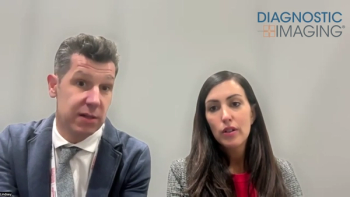Adding fluorine 18 fluorodeoxyglucose (FDG) positron emission tomography (PET) to CT allows for better detection of lymph node (LN) metastasis in high-risk endometrial cancer, according to a study published in the journal Radiology. Researchers from Canada and the United States performed a prospective multicenter study to assess the diagnostic accuracy of FDG/PET combined with diagnostic contrast material–enhanced CT in detecting LN metastasis in high-risk endometrial cancer. The researchers gathered data from January 2010 and June 2013 of 215 patients who underwent PET/CT and pelvic and abdominal lymphadenectomy. A total of 207 enrolled patients (mean age 62.7 years) had PET/CT and pathologic examination results for the abdomen and pelvis. The researchers used data in all 23 patients with a positive abdominal examination and in 26 randomly selected patients with a negative abdominal examination for the central reader study. Seven independent blinded readers participated in different sessions one month apart to review diagnostic CT and PET/CT results. The accuracy was calculated at the participant level, correlating abdominal (right and left para-aortic and common iliac) and pelvic (right and left external iliac and obturator) LN regions with pathologic results, respecting laterality. Reader-average sensitivities, specificities, and areas under the receiver operating characteristic curve (AUCs) of PET/CT and diagnostic CT were compared. Power calculation was for sensitivity and specificity in the abdomen. The results showed the FDG PET/CT had satisfactory diagnostic accuracy in detecting abdominal LN metastasis: PET/CT Diagnostic CTSensitivity, detection of LNmetastasis abdomen 0.65 0.50Sensitivity, detection of LNin pelvis 0.65 0.48Specificity, abdomen 0.88 0.93Specificity, pelvis 0.93 0.89AUC, abdomen 0.78 0.74AUC, pelvis 0.82 0.73 The researchers concluded that compared with diagnostic CT alone, addition of PET to diagnostic CT significantly increased sensitivity in both the abdomen and pelvis while maintaining high specificity.




























